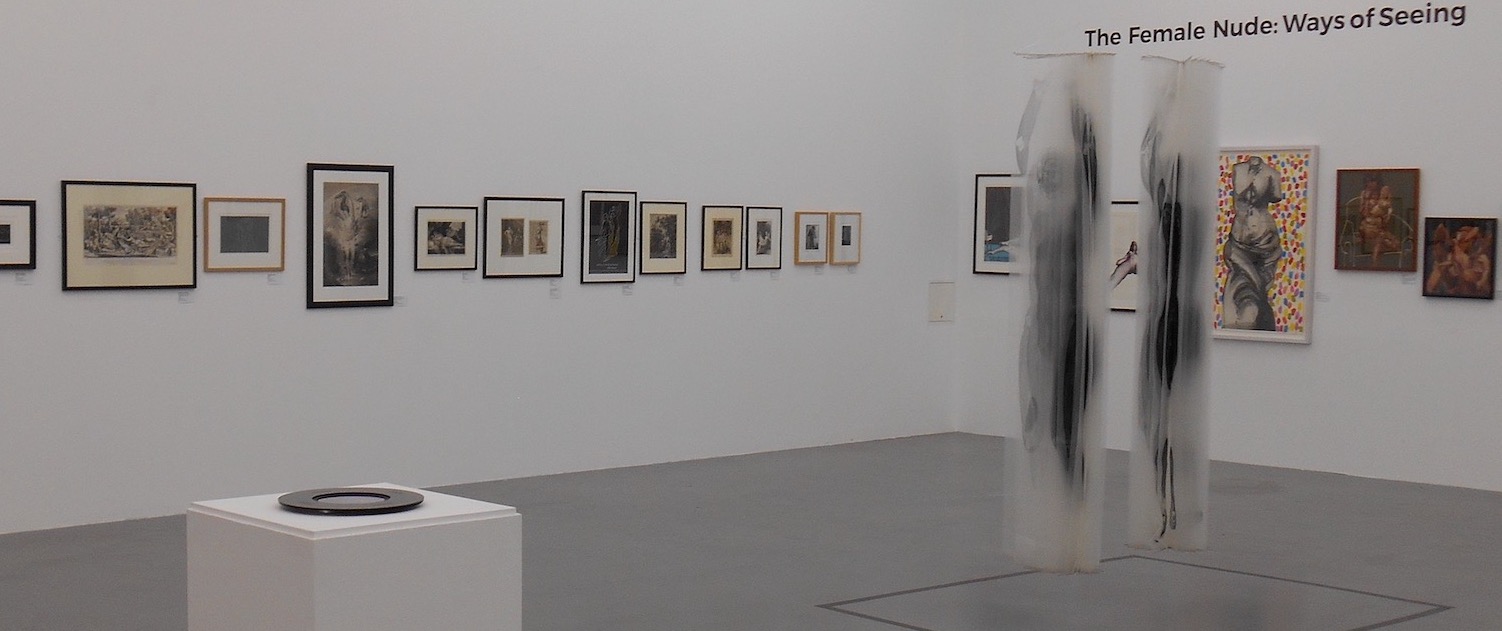The African American sculptor Meta Vaux Warrick Fuller (1877-1968) was characterised as the ‘delicate sculptor of horrors’ by the French press during her time spent in Paris between 1899 and 1902. Megan Calvert-Skinner considers how appropriate this label is.

Meta Vaux Warrick Fuller, Carrying the Dead Body c.1901
Warrick Fuller’s exploration of horror through form can be connected to her direct contact with Auguste Rodin (1840-1917), who acted as her mentor during her last year in Paris. Rodin tackled themes of horror within his ‘most important work’ the Gates of Hell, 1880-1917 (Ruiz-Gómez, 2013, p.995). Based on Dante’s Inferno, Rodin modelled figures to be placed on the final Gates, exploring morality through characters condemned to a life in hell. An example of such work is The Three Shades, depicting three male figures standing with their heads bent in together. Natasha Ruiz-Gómez describes: ‘the work’s despair and tension in the taut strain of their deformity: an unseen weight forces the figures’ necks and heads into an excruciating elongation to form a unified and unnatural horizontal’ (2013, p.998).
This draws similarities to Warrick Fuller’s Carrying the Dead (1901), as horror, in both works, is visually carried through physicality of the forms, significantly in their depiction of physical weight. Carrying the Dead displays a figure of war, trudging forward with his slain comrade over his shoulder. The dead body is described as having been ‘lain on the battlefield for days,’ (Brawley, 1919, p. 64). Although this is not instantly clear from photographs of the lost sculpture, it conjures an image of a decayed, gruesome figure. The man bearing the weight struggles through the pain. His legs are bent and widely spaced, visually representing heaviness and strain. Warrick Fuller relies on posture to convey horror, just as Rodin uses posture in The Three Shades to suggest being pulled down to their bestowed eternity in hell.
Warrick Fuller can also be characterised as a sculptor who explores human emotion, to which the Symbolist movement acted as an inspiration. Upon moving to Paris, Warrick Fuller was likely introduced to Symbolism by family friend and fellow African American artist, Henry Ossawa Tanner. Tanner explored Symbolism in his later works, after initially painting in a ‘realistic, academic style’ (Fort, 2003). Symbolism emphasised feeling and suggestion through form, over explicit ‘definition and fact’ (Kaplan, 2003), creating a definition beyond the literal image. Warrick Fuller’s Secret Sorrow (1901) can be understood as utilising symbolist techniques.
Despite the horrific subject matter of a man eating his own heart, Secret Sorrow focuses on emotional depth. He crouches, his shoulders hunched, and his head bowed down towards his heart. With bent knees, and arms tight to his chest, he physically confines himself within the base he sits upon. This posture evokes a sense of vulnerability, closed off from full view. He appears shameful, avoiding our gaze as he desperately savours his meal, his hand grasping his heart and his mouth pressed up against it. The heart is often used as a metaphorical image, a symbol of love and the soul. In this context, it is as if this individual is devouring his own humanity. Rather than an image of horror, we see a pitiful image, as the man sits ‘worn and gaunt and in despair’ (Brawley, 1919, p.64).
Warrick Fuller was labelled ‘delicate’ in duality with the coining as the ‘sculptor of horrors’. However, the power the artist elicits within her pieces takes away from any existing element of delicacy, prioritising ‘themes of horror, pain and sorrow, instead of beauty’ (Hoover, 1977, p.679). Texturally the works are built with a visual involvement of the artist’s hands, displaying vigorous engagement with her creations, rather than employing softness. The negative emotional rawness of her works’ subject matter uses the macabre to enhance this element, making there ‘nothing delicate or pretty about all such work as this’ (Brawley, 1919, p.65).
On the other hand, her characterisation as the ‘sculptor of horrors’ is in part true. Warrick Fuller’s work does explore themes of horror, trauma, and gruesome stories. To focus purely on this element, however, would be to take away from the symbolist and emotional depth that exists within. Combining the two helps stress the pain and add significance to the importance of the message that is beneath the layer of initial horror we encounter. However, ‘delicate sculptor of horrors’, with the addition of a suitably ‘feminine’ adjective, reduces Warrick Fuller to her gender. It does not allow full appreciation of the strength of her pieces and her character as a woman in a male profession, therefore, not appearing as apt.
Megan Calvert-Skinner BA Art History, 3rd Year
Extract from work undertaken on the module: Study of a Single Artist – Meta Vaux Warrick-Fuller
Brawley, B.G., 1919. Women of achievement: written for the Fireside Schools, under the auspices of the Woman’s American Baptist Home Mission Society, pp.61–69.
Fort, Ilene S., 2003. Tanner, Henry Ossawa. Grove Art Online. Oxford University Press. Available at: <https://www-oxfordartonline-com.chain.kent.ac.uk/groveart/view/10.1093/gao/9781884446054.001.0001/oao-9781884446054-e-7000083269> [Accessed 1 November 2020].
Hoover, V.J., 1977. Meta Vaux Warrick Fuller: Her Life and Her Art. Negro History Bulletin, 40(2), pp. 678–681.
Kaplan, J., 2003. Symbolism. Grove Art Online. Oxford University Press. Available at: <https://www-oxfordartonline-com.chain.kent.ac.uk/groveart/view/10.1093/gao/9781884446054.001.0001/oao-9781884446054-e-7000082761> [Accessed 1 November 2020].
Pearce, M., 2017. The Heart In Art | The Met Store Magazine. [online] The Met Store Magazine. Available at: <https://www.metstoreblog.org/the-heart-in-art/> [Accessed 1 November 2020].
Ruiz-Gómez, N., 2013. A Hysterical Reading of Rodin’s Gates of Hell. Art History, 36(5), pp.994-1017.
